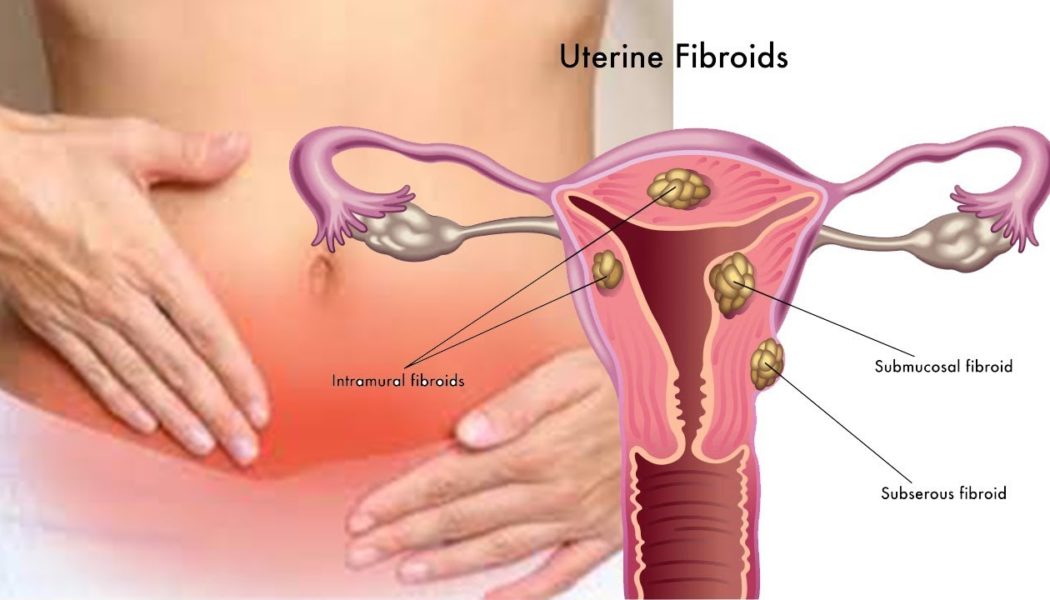Myomectomy in Costa Rica
Search and Compare the Best Clinics and Doctors at the Lowest Prices for Myomectomy in Costa Rica

Find the best clinics for Myomectomy in Costa Rica
No pricing info available
Mexico offers the best prices Worldwide
Price: $ 260
Clinica Hospital Santa Catalina, can be found in Radial Francisco J Orlich, Alajuela, Costa Rica and offers its patients Myomectomy procedures as well as 171 other procedures, across 4 different procedure categories. At present, there is no pricing information for Myomectomy procedures at Clinica Hospital Santa Catalina. The pricing information is quite specialised, so it's only available on request. The lead specialist at the Hospital will be carrying out all the treatments, and Clinica Hospital Santa Catalina is accredited by just one known accreditations institute, Costa Rica Ministry of Health
- Home
- Costa Rica
WHY US?
At Medijump, we're making medical easy. You can search, compare, discuss, and book your medical all in one place. We open the door to the best medical providers worldwide, saving you time and energy along the way, and it's all for FREE, no hidden fees, and no price markups guaranteed. So what are you waiting for?

Free

Best Price

Widest Selection

Risk-Free
What you need to know about Myomectomy in Costa Rica

Myomectomy is a surgical procedure performed to remove Uterine fibroids – abnormal growths that appear in or on a woman’s uterus. You may undergo this procedure if you have any of the following symptoms: Heavy menstrual bleeding, Menstrual periods that last longer than a week, pelvic pressure or pain, frequent urination, etc.
What does a Myomectomy Procedure Involve?
There are three types of myomectomy: abdominal myomectomy, laparoscopic myomectomy, and hysteroscopic myomectomy. All performed under general anesthetic. With abdominal myomectomy, your surgeon makes a large incision through the lower abdomen into the uterus, removes the fibroids from the uterine wall, and closes the incisions with stitches. With laparoscopic myomectomy, your surgeon makes four small incisions to insert surgical tools and a laparoscope (a thin, flexible tube with a light and a camera on one end) and cut your fibroids into small pieces. With hysteroscopic myomectomy, your surgeon inserts a thin scope through your vagina and cervix into your uterus, then shave off pieces of the fibroid using a wire loop.
How Long Should I Stay in Costa Rica for a Myomectomy Procedure?
Unless you undergo hysteroscopic myomectomy, you will need to stay in the hospital for 1 to 3 days. Plan to stay in Costa Rica for at least 7 days to attend follow-up checkups and also removal of the stitches.
What's the Recovery Time Like?
You will need to rest for 1 week and the recovery period depends on which type of Myomectomy you underwent: four to six weeks after abdominal myomectomy, two to four weeks after laparoscopic myomectomy, two to three days after hysteroscopic myomectomy. Wait for around six weeks until you can have sex, but you should wait three to six months before trying to get pregnant.
What sort of Aftercare is Required for Myomectomy Procedures in Costa Rica?
After the surgery, you will have some restrictions on your diet. You will need to take care of the surgical site as it heals to limit scarring and infection. You may be advised to do some light exercises, but refrain from doing anything strenuous such as heavy lifting until you are fully recovered.
What's the Success Rate of Myomectomy Procedures in Costa Rica?
Myomectomy is very effective and complications are very rare. However, it does have some risks and side effects you need to be aware of, including excessive blood loss, pregnancy complications, scar tissue, damage to nearby organs, and new fibroids.
Are there Alternatives to Myomectomy Procedures in Costa Rica?
If your fibroids do not cause any symptoms or the symptoms are mild, you do not need any treatment. If you do need treatment, your alternatives to myomectomy are myolysis, uterine artery embolization, hysterectomy, and endometrial ablation.
What Should You Expect Before and After the Procedure
After a myomectomy, you will have relief from the symptoms of your uterine fibroids, such as pelvic pain and menstrual bleeding.
Whilst the information presented here has been accurately sourced and verified by a medical professional for its accuracy, it is still advised to consult with your doctor before pursuing a medical treatment at one of the listed medical providers
No Time?
Tell us what you're looking for and we'll reachout to the top clinics all at once
Enquire Now

Popular Procedures in Costa Rica
Prices Start From $500

Prices Start From $714

Prices Start From $714

Recommended Medical Centers in Costa Rica for Myomectomy

- Interpreter services
- Translation service
- Religious facilities
- Medical records transfer
- Medical travel insurance
- Health insurance coordination
- TV in the room
- Safe in the room
- Phone in the room
- Private rooms for patients available

- Interpreter services
- Translation service
- Religious facilities
- Medical records transfer
- Medical travel insurance
- Health insurance coordination
- TV in the room
- Safe in the room
- Phone in the room
- Private rooms for patients available

- Interpreter services
- Translation service
- Religious facilities
- Medical records transfer
- Medical travel insurance
- Health insurance coordination
- TV in the room
- Safe in the room
- Phone in the room
- Private rooms for patients available
Myomectomy in and around Costa Rica
Costa Rica is a tiny country in Central America, bordered by Panama, Nicaragua, the Caribbean Sea, and the Pacific Ocean. This country is generally regarded as having the most democratic and stable government of all the Central American countries. It charms its visitors with unspoiled beaches, lush rainforests, a plethora of wildlife, and steaming volcanoes. Besides its breathtaking landscape, Costa Rica is also famous for its healthcare. Tens of thousands of medical tourists come to this country to take advantage of its world-class yet inexpensive medical care. Most of the medical procedures in the country are 40% to 50% cheaper than in the United States or Europe. Cosmetic surgery and dentistry are the most sought-after procedure, but a growing number of foreign patients also come for orthopedic treatment, bariatric surgery, and eye surgery.
Popular Parts of Costa Rica
Surrounded by volcanoes and green hills, San José, the capital and largest city of Costa Rica, has one of the most spectacular settings in the world. This laid-back and pleasant capital is filled with colonial mansions that have been converted into contemporary galleries, amazing food, and vibrant nightlife. The most popular attractions in this city are Museo de Jade, Teatro Nacional, Museo Nacional de Costa Rica, and Mercado Central. Those who want to relax under the sun usually visit Tamarindo, which is famous for its beaches. Here, visitors can visit Las Baulas National Marine Park, go rafting in the Colorado River, or relax in Playa Tamarindo.
Weather and Climate in Costa Rica
Due to its close proximity to the Equator, Costa Rica is a tropical country with two seasons: the dry “summer” season and rainy “winter” season. The dry season, from January to April, is warm and pleasant. Rain is very unlikely to fall during this season, even in the rainforests. The rainy season, sometimes called the “green season,” is hot and humid. Rain usually falls in the afternoon and evening, while the mornings are often sunny. On the Caribbean coast, rainfall is spread out throughout the year, but it gets far less rain in September and October.
Getting around in Costa Rica
Juan Santamaría International Airport is the main international airport in Costa Rica, located in San José. It has various flights to domestic and international destinations, including Toronto, Mexico, New York, and London. Affordable domestic flights between San José and popular destinations are the fastest way to get around and handy for accessing the more remote areas. Buses are reasonably priced and have an extensive network, but they can be slow. Private and shared shuttles are available, the best way to get around is, however, by renting a car as it gives more flexibility and allows you to access more remote destinations.
Tourist Visas in Costa Rica
Everyone who wants to visit and stay in Costa Rica is required to have a passport unless they are a citizen of one of the visa-exempt countries. The visa-exempt countries include EU countries, the UK, the US, Australia, Russia, and several other nations. Citizens of other countries not listed in the visa exemption agreement need to apply and obtain a visa before visiting.
Additional Information
- Local Currency: Colón (CRC) is the national currency of Costa Rica. 1 USD is equivalent to 601 CRC. In some places, such as tourist areas, US dollars are accepted.
- Money & Payments: ATMs accepting foreign cards, particularly Visa, can be found in all major cities and small towns. Credit cards, such as Visa and MasterCard, are all accepted in larger establishments. Tipping is not mandatory but appreciated.
- Local Language: Costa Rican Spanish is the official and most commonly spoken language in Costa Rica. English is widely spoken in tourist areas.
- Local Culture and Religion: Roman Catholicism is the official religion in Costa Rica, but the constitution provides for freedom of religion. Around 17% of the population is unaffiliated with any religions and around 3% follows either Buddhism, Islam, Judaism, Hinduism, Neo-Paganism, or other religions.
- Public holidays: New Year’s Day, Juan Santamaria Day, Guanacaste Day, Assumption, Mother’s Day, Independence Day, Day of the Cultures, and Christmas Day are some of the most celebrated public holidays in Costa Rica.
Popular Searches
- Plastic Surgery in Thailand
- Dental Implants in Thailand
- Hair Transplant in Thailand
- Breast Augmentation Thailand
- Gastric Sleeve in Thailand
- Gender Reassignment Surgery in Thailand
- Laser Hair Removal in Bangkok
- Botox in Bangkok
- Dermatology in Bangkok
- Breast Augmentation in Bangkok
- Coolsculpting in Bangkok
- Veneers in Turkey
- Hair Transplant in Turkey
- Rhinoplasty in Turkey
- Stem Cell Therapy in Mexico
- Rhinoplasty in Mexico
- Liposuction in Mexico
- Coolsculpting in Tijuana
- Rhinoplasty in Korea
- Scar Removal in Korea
- Gastric Sleeve in Turkey
- Bone Marrow Transplant in India
- Invisalign in Malaysia
- Plastic Surgery in the Dominican Republic
- Tummy Tuck in the Dominican Republic
- Plastic and Cosmetic Surgery in Poland
- Rhinoplasty in Poland
- Hair Implant in Poland
- Dental Implants in Poland
- IVF in Turkey